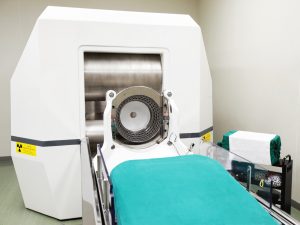Trigeminal neuralgia (TN) is a painful condition that affects the trigeminal nerve, which carries sensation from the face to the brain.
It can cause sudden, severe facial pain that can be triggered by everyday activities such as brushing teeth, speaking, or exposure to wind.
It’s a relatively rare condition, affecting only about 5 in 100,000 people each year. Because the pain is felt in the jaw or cheek, many patients see their dentist first. But the issue isn’t your teeth – it’s your nerves.
Introducing the trigeminal nerve
The trigeminal nerve is a large nerve in your head, responsible for sending messages to your face, forehead, jaw, gums and eyes.
What is trigeminal neuralgia?
Neuralgia refers to a severe stabbing or burning pain that occurs along the path of a nerve – in this case, the trigeminal nerve.
Trigeminal neuralgia can cause sudden, shocking or stabbing pain in one side of the face. These episodes can last from seconds to minutes and may occur in clusters throughout the day. Some people also experience dull pain between attacks.
What causes trigeminal neuralgia?
In some cases, there’s no obvious cause. In others, trigeminal neuralgia may be caused by:
- A nearby artery or vein compressing the trigeminal nerve
- Multiple sclerosis
- Stroke
- A tumour compressing the nerve (less common).
Diagnosing trigeminal neuralgia
To diagnose the condition, your doctor may:
- Examine you
- Ask about your symptoms and their impact on your life
- See how you respond to certain medications
- Order scans if they suspect you may need surgery.
First-line treatment options
Initially, you may be prescribed medications to help reduce the frequency and intensity of pain attacks.
These medications work by stabilising nerve activity, although they can cause side effects such as drowsiness or dizziness. Their effectiveness may decrease over time. Some patients find it hard to tolerate the doses required for symptom control.
When to consider surgical intervention
Surgery may be considered when:
- Your pain is no longer adequately controlled with medication
- Side effects from medications are significant or disabling
- There is evidence of vascular compression or other structural abnormalities on imaging
- You feel you’ve exhausted conservative options and are seeking a long-term solution.
At Macquarie Neurosurgery and Spine, we perform a range of procedures for trigeminal neuralgia. The appropriate option depends on several factors, including your age, medical history, pain severity, and anatomical findings.
Neurosurgical options for trigeminal neuralgia
Any surgical or invasive procedure carries risks. In this case, the risks can include temporary or permanent facial numbness and, in some cases, hearing loss.
1. Microvascular decompression (MVD)
Microvascular decompression typically offers the greatest potential for long-term relief and preservation of facial sensation. It may be performed if your trigeminal nerve is being compressed by a nearby blood vessel.
During the surgery, the neurosurgeon gently moves the vessel away from the nerve and inserts a small Teflon® pad to prevent further contact.
2. Stereotactic radiosurgery
This is a non-invasive procedure that uses focused radiation (Gamma knife) to disrupt pain signals in the trigeminal nerve.
It may suit you if you’re unable or unwilling to have surgery. It’s an outpatient procedure with minimal recovery time. Results may develop slowly over the coming weeks. Some patients require repeated treatments.
3. Percutaneous procedures
Percutaneous procedures are minimally invasive treatments that involve accessing the trigeminal nerve through a needle inserted through the cheek, typically under X-ray guidance.
These techniques aim to disrupt pain signals travelling through the nerve. Relief may last from months to years.
Determining the right treatment
If you are living with facial pain or have been diagnosed with trigeminal neuralgia, early consultation with a neurosurgeon can help you explore all available treatment options.
At Macquarie Neurosurgery & Spine, surgical decision-making is guided by detailed imaging studies, clinical assessment, and multidisciplinary team discussion. Our neurosurgeons have subspecialty expertise in managing similar pathologies, making us ideally placed to help relieve your facial pain.
Disclaimer
All information is general and not intended as a substitute for professional advice. Any surgical or invasive procedure carries risks.
References
- Facial Pain Association, Trigeminal neuralgia, https://www.facepain.org/understanding-facial-pain/diagnosis/trigeminal-neuralgia/, [Accessed 27 May 2025]
- Healthdirect, Trigeminal neuralgia, https://www.healthdirect.gov.au/trigeminal-neuralgia, [Accessed 27 May 2025]
- International Association for the Study of Pain, Trigeminal neuralgia, https://www.iasp-pain.org/wp-content/uploads/2022/10/Trigeminal_Neuralgia.pdf, [Accessed 27 May 2025]






